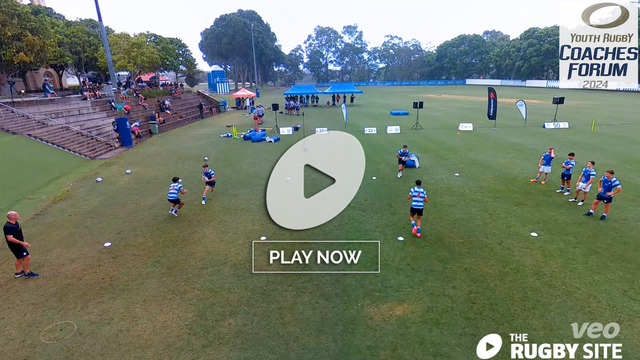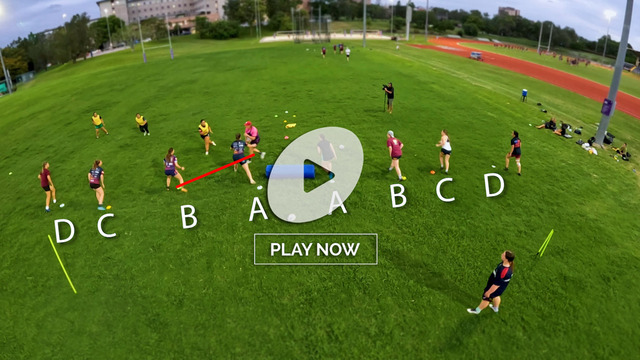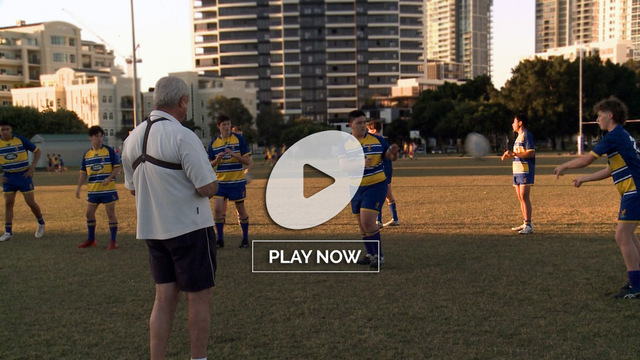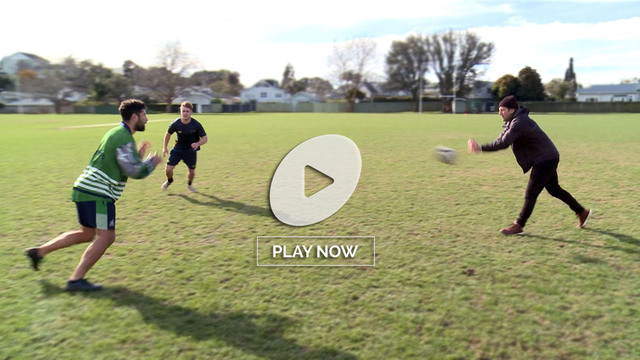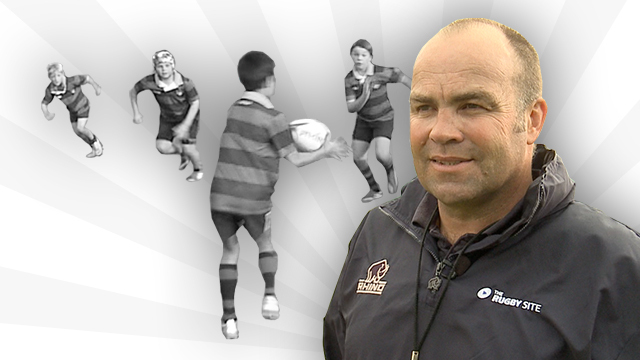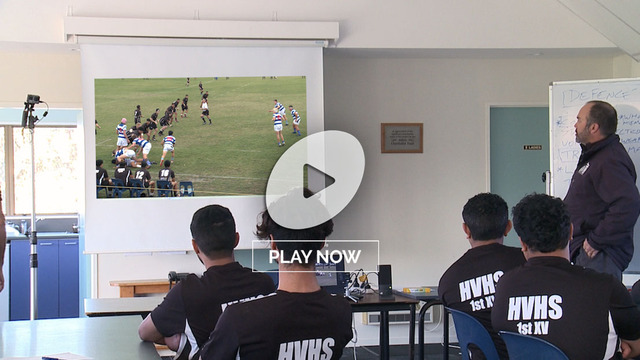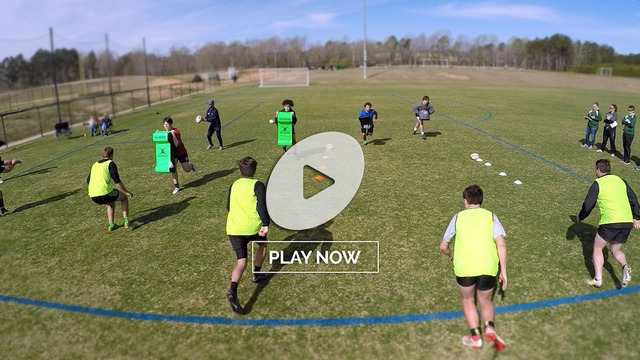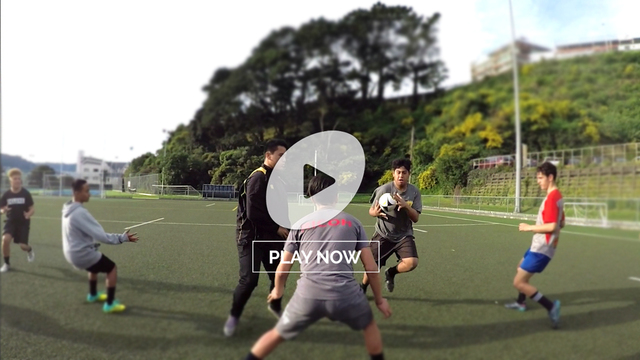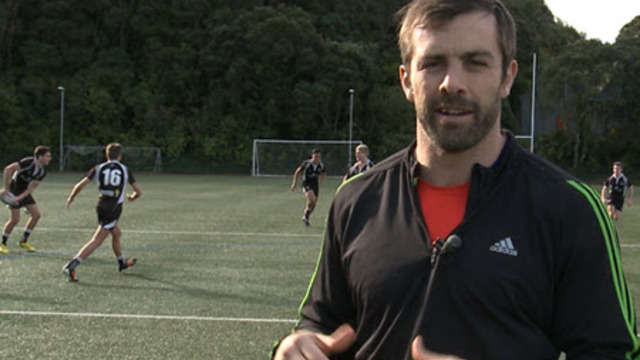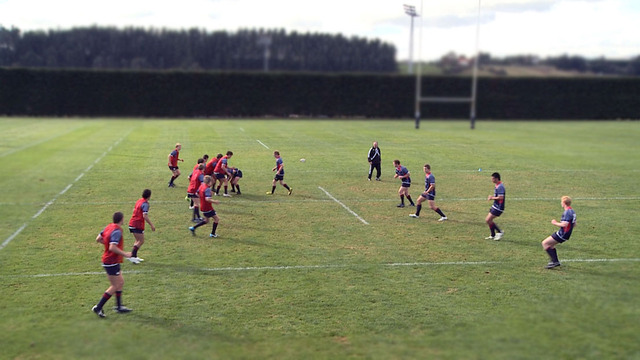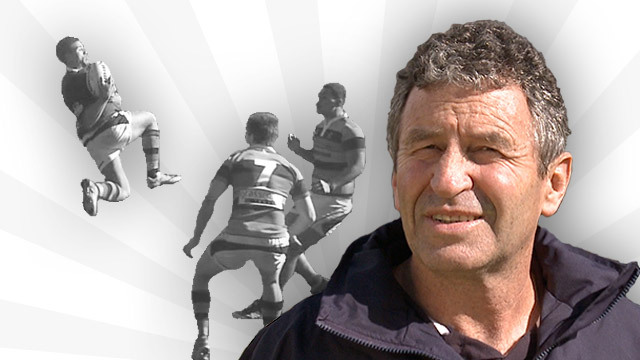One of the most influential factors in the two first round games of the 2019 Rugby Championship was defence of the short-side. Australia lost their game against South Africa in Johannesburg largely on the back of deficiencies in that area.
Meanwhile over in Buenos Aires a few short hours later, the All Blacks shaded a tight contest against Argentina – a win which owed much to the excellence of their short-side defence at key moments in the match.
Defence of the short-side demands a keen sense of anticipation and vocal communication skills in the defenders allotted to the task – in particular one of the bigger back-rowers (either number 8 or number 6) and defensive half-back (number 9).
Why? Firstly, because attacking ‘flow’ is usually going in the opposite direction, with the majority of players from both sides wrapping around the ruck edge towards the far touch-line. Secondly, because most of the backs are typically positioned on that far side, with only a selection of two or three forwards plus one back stationed near the site of the original set-piece.
At the game in Jo’burg, the Springboks excelled in their attempts to take the main Wallaby defensive organizer (number 9 Nic White) out of play on one phase, and then exploit the lack of communication and co-ordination among the remaining forwards on the next.
At the Estadio José Amalfitani, the trend was reversed, with New Zealand scrum-half Aaron Smith a dominant influence in ensuring that the Kiwi short-side defence was not only well-organized, but also a threat to create turnovers, and try-scoring opportunities off those turnovers.
Let’s take a limited, but prophetic example of that short-side defensive intelligence in action: From an attacking lineout, the Pumas have driven the ball infield on the first couple of phases. After second phase, we can see a typical situation unfolding:
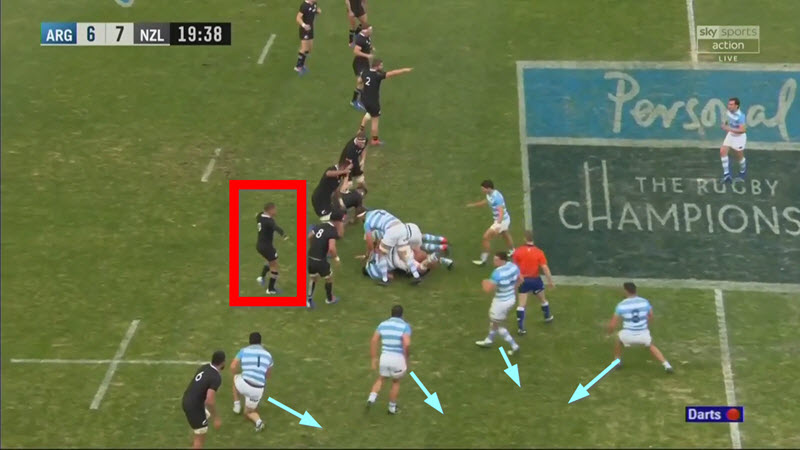
As Argentine scrum-half Tomas Cubelli approaches the breakdown to clear the ball, his opposite number (Aaron Smith) is the defensive orchestrator, with both arms out to make sure the numbers are right on both sides of the ruck.
At this stage, the intentions of the four Puma forwards at the bottom of the screenshot become clearer. Instead of wrapping across towards the far side of the ruck, they are looking to retire to the short-side and form an attacking pod in that zone.
As soon as Smith notices this regrouping, he acts – pushing Ardie Savea out of the ‘A’ slot next to the side of the breakdown and out to ‘B’ defender instead:
As Puma captain Agustin Creevy receives the pass from Cubelli, the All Black wall has suddenly formed in front of him, and any hint of an advantage has dissipated:

When the ball is moved back to the open-side, the defence is set and Argentina lose a few more metres.
The next Puma attacking lineout sequence proved to be far more significant in the context of the result of the match. Just before half-time, they moved the ball into midfield on first phase:
At end of the phase after the ruck forms, Smith has again read the movements of the Puma forwards quickly and brightly. All of them have stayed short rather than wrapping to the far side, and the main Argentine playmaker (number 10 Nicolas Sanchez) is angling to come back to the same side too:
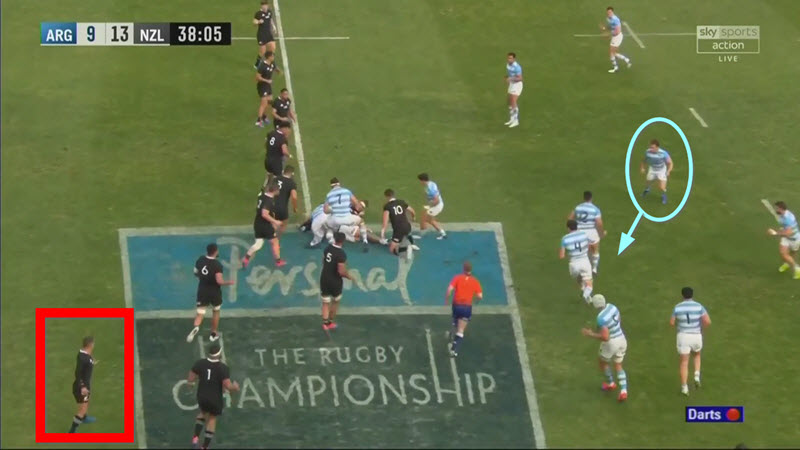
As Sanchez makes his move to receive Cubelli’s delivery, the All Blacks have everything covered in the expected direction of attack:
Sanchez is bracketed by two All Black forward defenders and the back outside him (number 11 Ramiro Moyano) is marked by Smith:
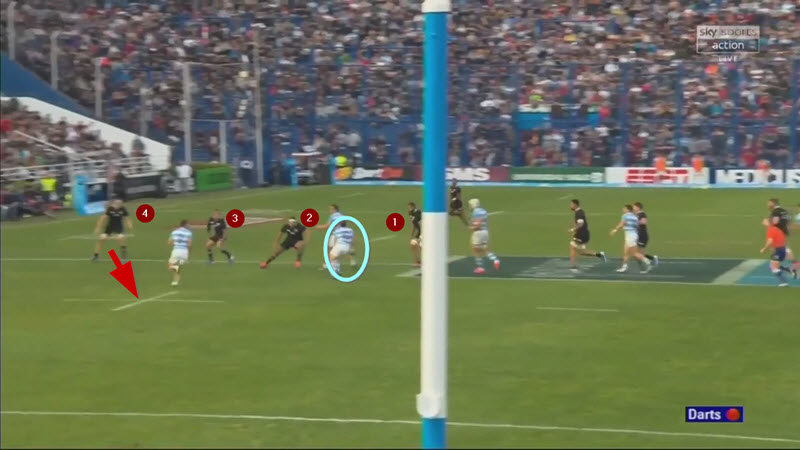
The positioning of the last man on the New Zealand line – second row Brodie Retallick – is also instructive. He doesn’t move out to shadow the last attacker, he defends in the space between Sanchez and number 8 Javier Ortega Desio, and this attitude gives him the chance to make an interception rather than a tackle:
This is a good illustration of the aggressive philosophy behind modern professional defensive methods. The last attacker is routinely cut loose in order that a turnover can be created in the space between him and the passer, before the ball ever reaches the receiver.
The final example comes from the crucial period at the beginning of the second half, with the Pumas trying desperately to regain a foothold in the match:
Once again, the attacking platform is a lineout just outside the New Zealand 22, from a maul crabbing slowly infield. Even though Cubelli attempts to offset Smith by taking a step in the opposite direction at the start of the play, the Kiwi halfback is not deceived.
He not only forces Cubelli to pass to Sanchez (who has moved back late to the short-side for a second time), he then moves out to cover Sanchez and hang on to him for long enough in the tackle that he cannot clean out over the top of right wing, Matias Moroni. All Black number 11 Jordie Barrett duly wins the turnover penalty over the exposed Puma wingman.
It was a virtuoso defensive performance from Aaron Smith, one which spotlighted the importance of keeping the 9 alive and active in defensive situations where play comes back ‘against the grain’. As a result, what Argentina obviously hoped would be a strength of their attacking game became a weakness from which the All Blacks extracted both penalties and points – game-winning points.
New Zealand succeeded in an area in which Australia failed in the first round of the 2019 Rugby Championship, and from local success the bigger win was built: “mighty oaks from little acorns grow”.




